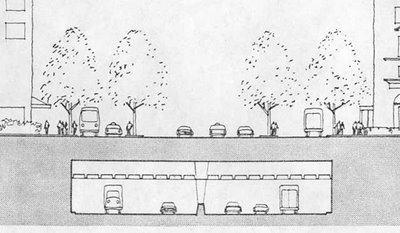On 7/24/07, Michael T Packard <michaelpackard1@ peoplepc. com> wrote:The Minetta Transportation Institute published a report in 2002 titled, "Lessons from the Most successful Transit Systems in the 1990's". At the end of that study, in a section on review of literature-( p.117 ), they quoted a European Commission Transport Research study to the effect that,
"Road pricing is potentially the most effective way to shift riders to transit."
We all know it won't be middleclass or upper class car users being forced out of their cars by these targeted road tax hikes. Low income drivers will have to make multi-transfer ride trips on transit and sacrifice much time. Or they can travel or on crowded side streets and still sacrifice their time.
The central city snots who "love all mankind" just can't stand people living in suburbs, especially the poor. The snots will make them pay one way or the other.
Mike
Nor can such people stand any sort of road project, irregardless of the environmental consequences - e.g. its utility and its use of existing corridors.
It's as if such people don't think of the environmental footprint importance of infrastructure for accommodating greater human population and activity.
To them it does not matter whether the project respects existing properties and landmarks. They may have cut their teeth opposing a cross town Lower Manhattan or Mid Town Manhattan elevated highway that would have cleared a swath of buildings. But ultimately as of this writing, they oppose any new vehicular road that lacks traffic lights.
Apparantly our political elites don't include any truck drivers.
Just think of that movie
"The Day After Tomorrow" with Manhattan flooded and frozen, obviously with no food coming in, yet the people are shown dancing in the streets after being holed up for weeks in the New York Public Library, with a blissful ignorance of infrastructure matter. For instance, a pay phone in a subway that works during a flood, with not a mention of any inoperable toilets, nor regarding drinking water.

Such is our intellectually bankrupt criminal apostate shadow government.



